Terry Larson enters his underground garage in Mesa, Arizona, with the distracted air of someone accustomed to the remarkable. And once again, he is showing off an amazing discovery.
In his sprawling restoration shop, which has seen so many Jaguar and SS sports and racing cars brought back to life, there stands a crusty relic that must rate among the top echelon of all “barn finds.”
The low-slung form is that of a 1938 SS-100, a rare piece of Jaguar pre-war history that had been hidden away in a New Jersey storage shed for the past 60 years. And not only was it parked in 1958 and then largely forgotten, essentially no one in the global Jaguar community of owners and enthusiasts even knew it existed.
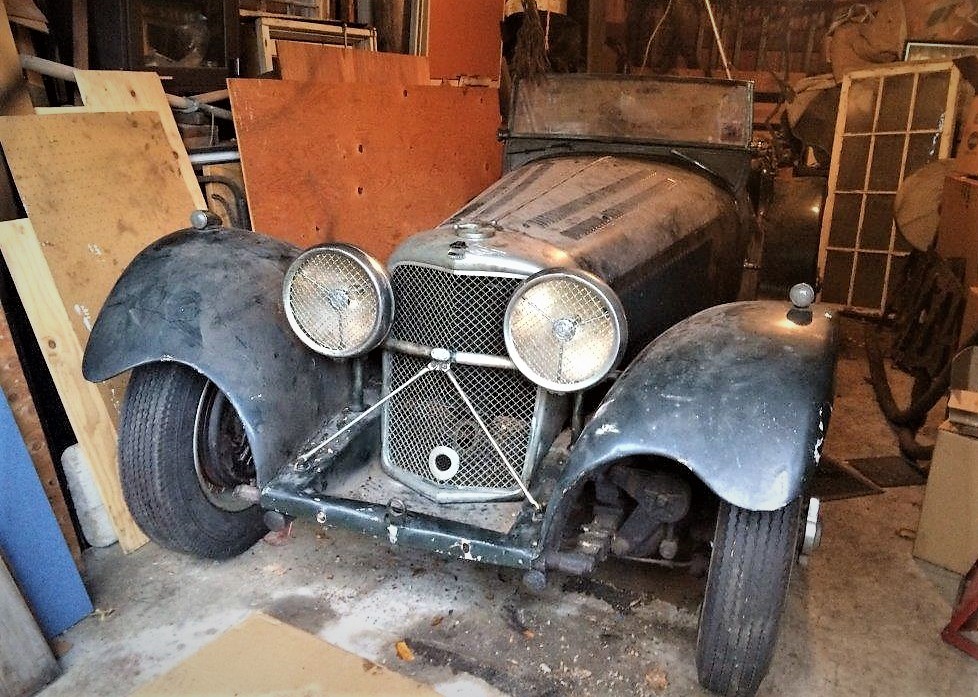
“It’s pretty interesting,” Larson said in a classic understatement. “You don’t run across cars very often that have been sitting for 60 years that were unknown.”
He acquired the car from the son of a man who purchased it in 1958 from someone, possibly a U.S. serviceman, who had brought it over from England.
“A lot of these cars were brought to America by service people when they finished their duty in England and came back to the States,” Larson noted. “These (cars) were quite cheap and the dollar was very strong, so they could make some money. I think that’s what happened here.”

But what happened next is both strange and perplexing. The son, who said he was 10 years old in 1958, explained to Larson how the car wound up being squirreled away.
“He went with his father when he bought it,” the restorer said he was told. “It was icy that day, and he said his dad went off the road and almost hit somebody’s house. But he made it home, got it in the shed, and his plan was to do a restoration on it.”
But while the new owner made a few steps toward restoring the car, he never got very far with it and apparently lost interest. After driving it into the shed that first time, he never drove it out again.

“He only drove it home,” Larson said. “That’s what I asked his son: ‘You mean when your dad drove it home, that was the last time he drove it?’ And he said, ‘Yeah that was it, and then it just sat. From that point on it just sat’.”
The dad was not a typical car guy with a circle of friends who might have known about the car, he added, so when it went in the shed, it was pretty much out of sight and out of mind.
Larson learned about the existence of the unknown SS-100, chassis 39049, because of his reputation in the Jaguar community. He is known as a leading expert, restorer, historian and archivist with unparalleled dedication to Jaguar and SS sports and competition cars.
“A friend of mine has a Jaguar repair shop and he heard about it,” he said. “He’s the one who contacted me. I told him where the numbers were on the chassis and so forth, and he took photos and sent them to me.”
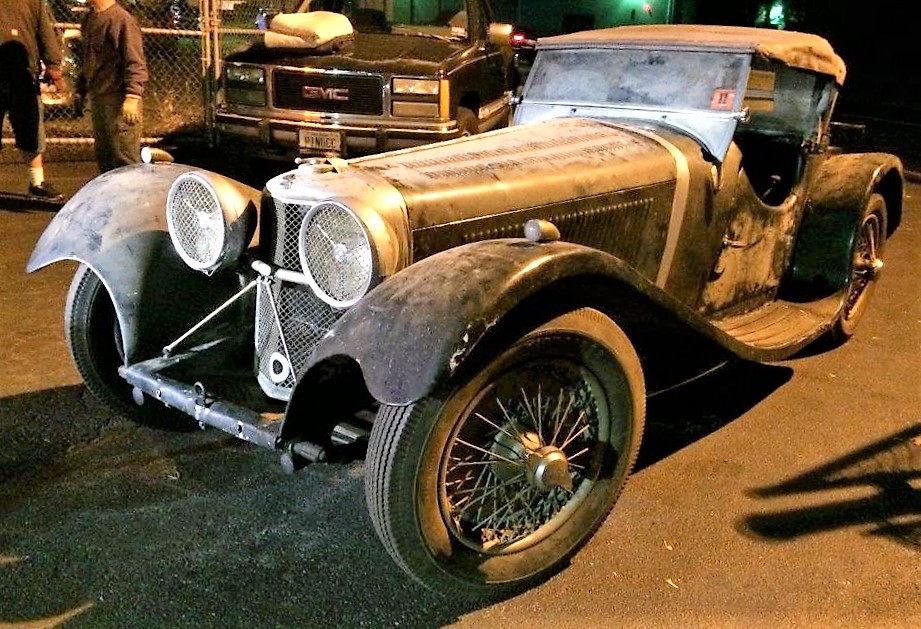
Larson also has a reputation as being something of a sleuth, the Indiana Jones of Jaguar archeology who has been involved with a number of astounding discoveries of historic cars. Among them, his restoration of the first SS sports car prototype, the SS-90 built in 1934, which took as much detective work as technical know-how in restoring the unique two-seater back to its original form.
Then there was the finding of the “missing” Jaguar E-type lightweight, the only one unaccounted for out of the scant number produced. Through sources and research, Larson found the alloy coupe buried under household debris in a small, Los Angeles-area garage, and in wonderfully patinaed “barn-find” condition.
He has achieved any number of other successes, from discovering a long-lost C-type hidden under a custom fiberglass body to settling some disputes about authenticity (there were once three C-types claiming the same chassis number).

Larson is the keeper of the register in the heady world of C-type, D-type and lightweight E-type race cars of the 1950s and ’60s, as well as keeping track of the sports cars produced before World War II by Jaguar’s predecessor, SS – the automaker changed its name to Jaguar because of the letters’ subsequent association with the Nazis.
His familiarity with SS-100s around the world is why Larson knew how uncommon this find was.
“I’m the registrar for the SS-100s for the Classic Jaguar Club,” he noted. “It’s never been listed in the CJA register, and I keep in touch with people from all over the world, people in England, Germany, Australia, people who keep track of these cars, and none of them knew that this car existed.
“It could have been destroyed or scrapped, we just didn’t know.”
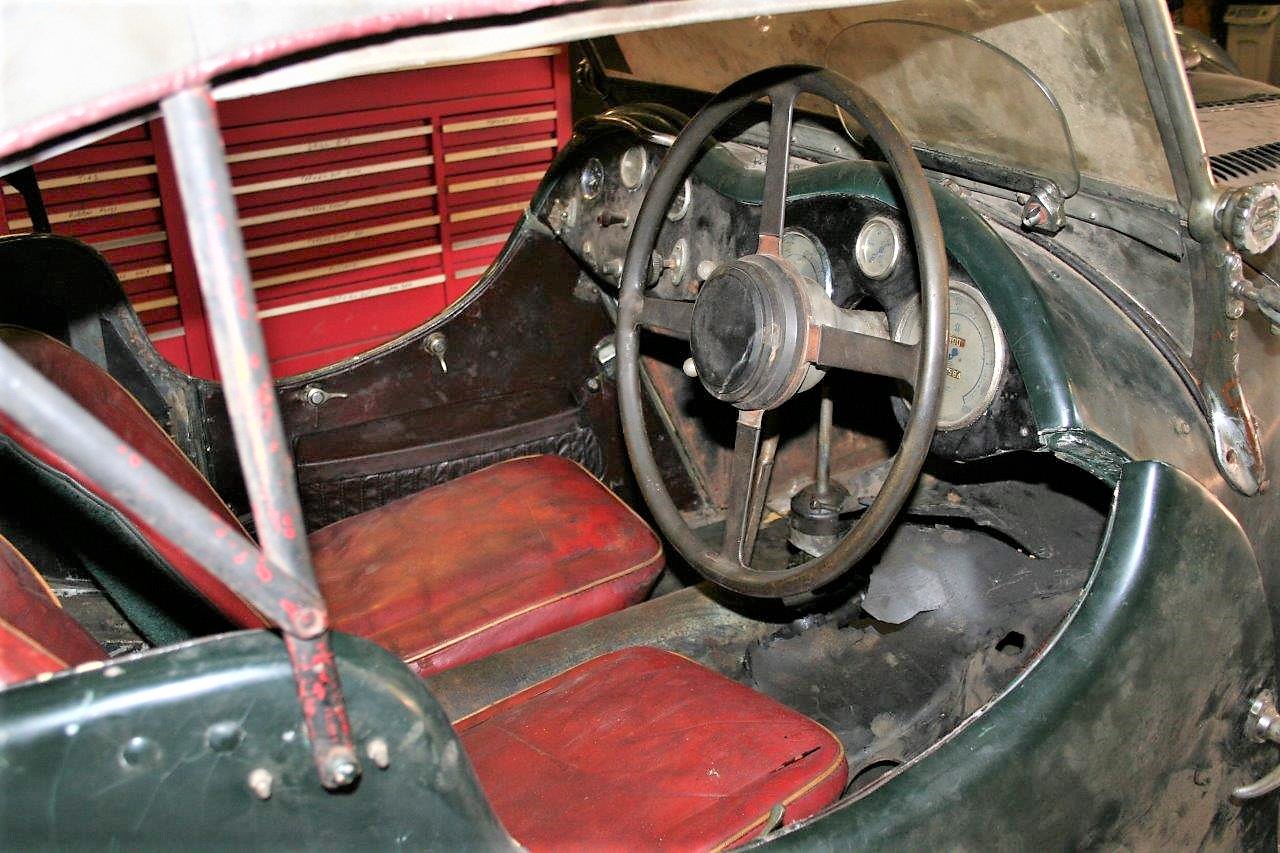
This SS-100, which wears the automaker’s first use of the ‘Jaguar’ name, is a special one with racing history and some unique features that provide clues to its life before being brought to the U.S., Larson said. The roadster has exterior handles on its doors, not usually found on these cars, and an alteration that allows the driver to move the seat further back.
These features probably mean the car once competed in rallies during which the door handles and seat placement would provide an advantage at checkpoints, where the driver or navigator would have to quickly exit and re-enter. That would be especially advantageous during bad weather when the removable side curtains would be in place.
A tireless researcher, Larson has in his possession photos of the car when it was raced at the Chrystal Palace in England in 1939 with its broad fenders removed. The setup of the single central “owl’s eye” taillamp mounted on the spare tire and the shortened chrome trim on the running boards could signify that the owner had the factory configure the car for easy removal of the fenders.

Larson has another set of photos of the car apparently taken just after the war that shows it at the Jaguar factory, probably in for service, with the exact setup as it has now.
“That’s something unique about this car, the owl’s eye lamp mounted off the spare,” he pointed out. “When I first saw photos of that, I thought it was incorrect and somebody had that done. But when you see the photos at the factory, you can see that’s where it was.
“I think since they were pulling the wings (fenders) off to race, they probably felt it made sense to mount the owl’s eye lamp there. It could have been done at the factory, it’s hard to say. But it was obviously done real early.”
Another thing shown in the early photos is a simple but well-designed luggage rack that’s still on the car.
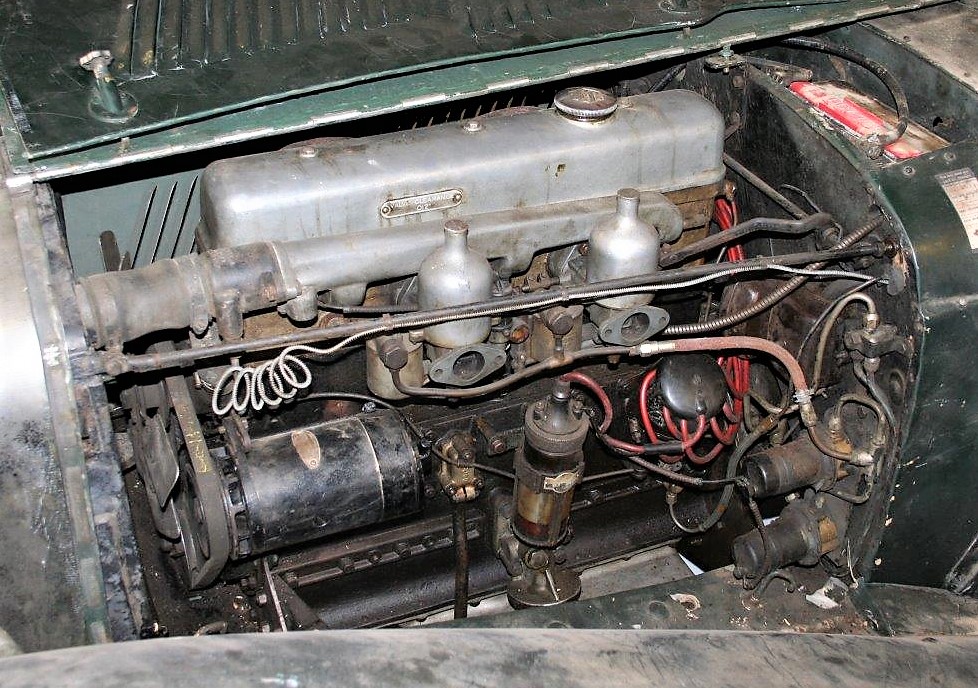
As a later version of the SS-100, the car has the desirable 3.5-liter overhead-valve engine, which apparently has never been completely apart. Just 115 of the 3.5-liter cars were produced.
Also under its hood (or in the U.K., the bonnet) can be found the original brass fuel pumps, unusual because during the war, there was a brass shortage and such things were often melted down for the war effort. The upper radiator hose and clamps also look like original equipment.
All the numbers match on the car, Larson added, with the correct engine and other parts. The car was repainted – the color changed from gray to dark green – and some trim work done sometime early on, but the car still retains a wealth of originality and lovely patina. The seats were apparently recovered at some point, although after 60 years in storage, they’re pretty well shot.
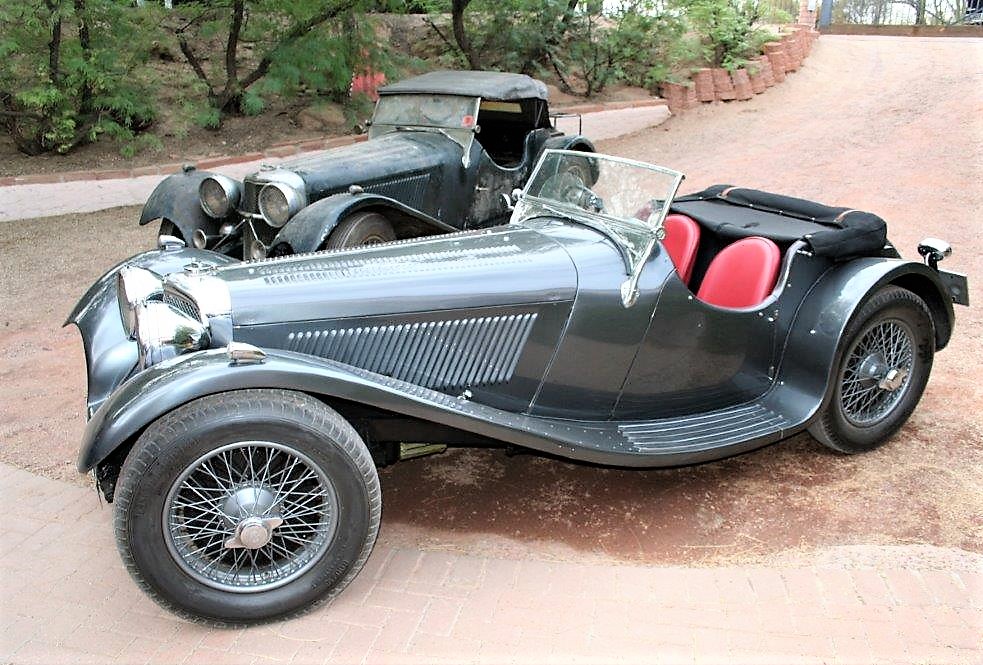
Among Larson’s own collection of vintage Jaguar sports and racing cars, including some specials, he has another 1938 SS-100 in restored condition that he had owned for many years and has used for rallies and other events. With the two cars sitting side-to-side, it’s easy to see the small differences of the latest acquisition.
So what happens now? Larson said he has restored a number of SS-100s over the years, as well as the SS-90, but this is the first time he has owned a car that is in such rare survivor condition.
Rather than restore it to original, he plans to do a sympathetic refurbishment that will put it back on the road but still leave it in “as-found” condition. The body and chassis are in good shape with no structural rust, and with only minor cosmetic damage, so it should be possible to bring the car back to life while retaining the story it has to tell.
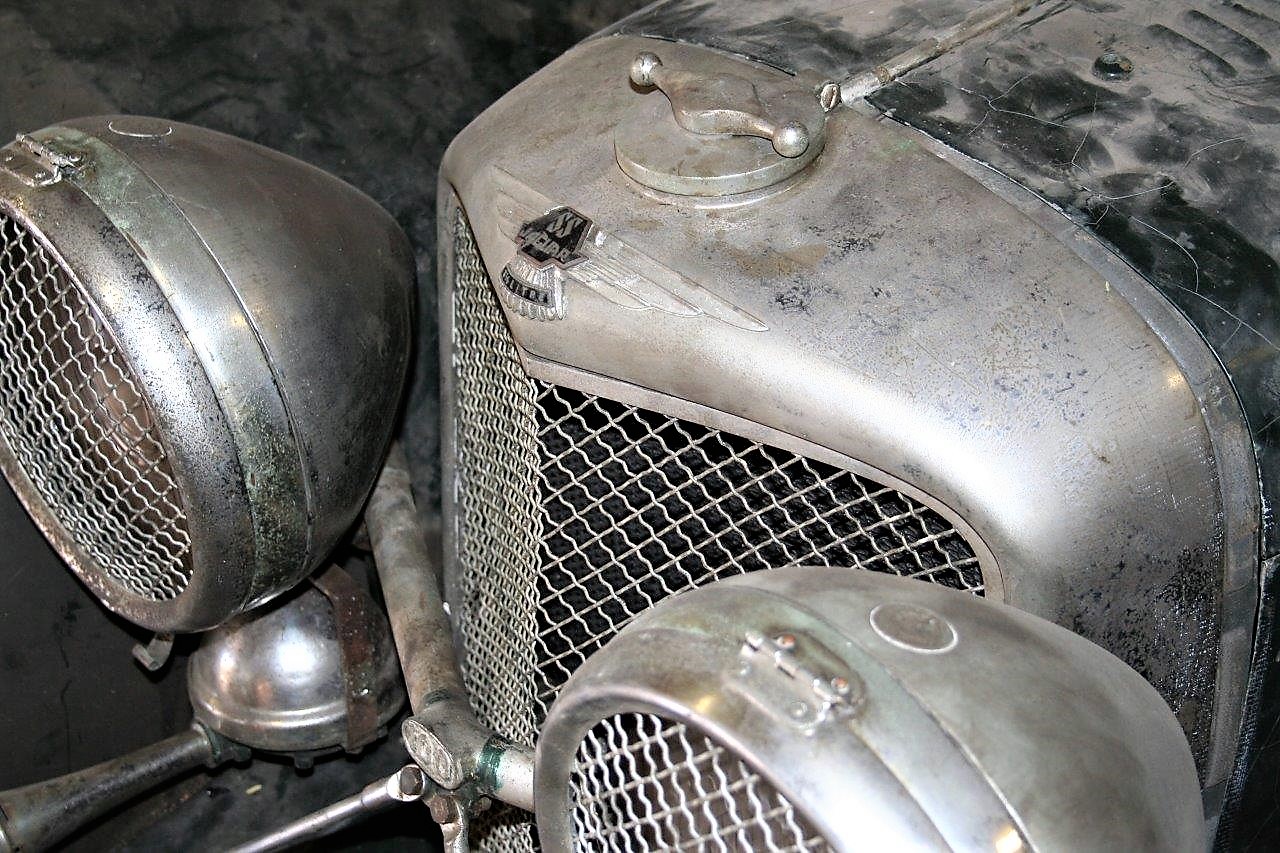
“I’ve always loved the 100s, and I’ve restored a lot of them,” he said. “This would be an easy car to restore, but I don’t want to restore it. I think the world is ready for something like this.
“I have a vision of what I want to do. My plan is to make it a running and driving car, get all the electricals working, but leave it very patinaed. We will either leave the paint as is or do a few spots and blend it in.
“One of the things we will have to do is rebuild the (wire-spoke) wheels and put new tires on it. When we paint the wheels, we will try and make them look old.”
Pointing out the filigree pattern on the tarnished radiator shell, Larson said, “Look at the chrome, how it’s patinaed. I’m gonna leave that. I’m not going to re-chrome it.
“We’ve restored about nine of these, plus the SS-90 prototype, but we’ve never taken one and done this. It will be a whole new experience. I kind of feel like I’m going full circle.”






This automobile is sexy. Thanks for your restraint to not restore it. Like a silent film star of long ago days the beauty is in it’s originality. Look forward to future articles and possible videos. Drive it!
This is a great story, Bob. Your enthusiasm for the barn find seems to parallel Terry Larson’s. This was fun to read and imagine you walking into Terry’s shop fully aware of the car’s rich history yet to be discovered — I can’t wait for this book.
Glad you’re having fun,
Larry Crane
Thanks, Larry. Terry’s compiled so much history at his place. Always a trip.
The SS100 must be my favourite car – I’m constructing one from bits and pieces – and it is really good news that this one has survived unmolested long enough until the realisation dawned that old cars are best left alone. Can you imagine what would have happened to it if it had been discovered in the 1980s – or even today – if it had gone to some multi-millionaire Pebble Beach-bum instead of Terry Larson ?
It would have been "restored" to death and emerged looking like a boiled-sweet in a cellophane wrapper, with every last trace of interest and originality wiped clean away, as has happened to so many other great cars, such as the Jaguar 3.8 Mark 2 "County" estate, where a Dutch "restorer" thought that he could do better, and threw away all the original modifica-tions – roof, tailgate, etc – fabricated his own, then fitted a fuel-injection 4.2 with a 5-speed gearbox, and a set of chrome wires.
Ditto (1951 Le Mans winner) Peter Whitehead’s XK140 – long thought lost, then found in the back of a repair shop. The new owner wrote an article in which he seemed to think that his nihilistic campaign to remove every last thing that made the car Peter Whitehead’s was actually praiseworthy! – out went the leather he sat on, the steering-wheel he held, the 3.4 engine /Moss box/drum-brakes/disc-wheels etc that he used, great chunks of the body and solid paint colour: What emerged was just yet another over-restored, re-trimmed, XK140 with a 3.8 engine and T5 gearbox, disc-brakes, chrome-wires, metallic paint – plus the final insult that clowns always put on their "classics" – a poxy Moto-Shita* wood-rimmed steering wheel.
If that’s what he wanted, why didn’t he just buy any old XK and leave Peter Whitehead’s alone?
The Corsica-bodied Daimler Double-Six has gone for ever too – and how many famous rods and original un-molested cars did Boyd Coddington wreck in his time ?
*When I rule the world, I will have a great bonfire built of those tacky-looking wheels, and place an effigy of Coyd Bodge-ington on top….
The story of the "discovery" of the "long-lost" thirteenth light-weight E-type also mentioned in the article always makes me smile: We get these entertaining stories of XK-SSs being found in Cuba, Rolls-Royces abandoned in the crumbling remains of a Maharajah’s palace, Bugattis at the bottom of Swiss lakes etc, but it’s hard to make anything romantic out of the story of the "missing" LWE, largely because it was never missing at all: In brief, it goes – man buys E-type, races it, puts it away in garage, end of. It didn’t ever change hands, and he didn’t even move house. The only interesting thing about the story is why nobody in the entire Jaguar world – historic racing-car specialists, racing-drivers, dealers, collectors, restorers, auctioneers etc etc right up to Jaguar themselves – ever had the sense in all those 50-or-more years, to pick the ‘phone up to the man who’d bought it, and ask him what he’d done with it ? – "Hi Fred – this is Jaguar Heritage/Frank Sytner/Nigel Webb/Chris Keith-Lucas etc – what happened to that light-weight E-type you bought back in ’64 ?" – "It’s in the garage – what about it ?". No detective work required and not exactly riveting stuff…..
And of course – the subject of this article is not an SS-100 Jaguar – (or even a "Jaguar SS100" as they’re usually called) – it’s an SS Jaguar 100. To explain – SS Cars Ltd was the manufacturer, and "Jaguar" was then just a model name, so it’s SS Jaguar in the same way that it’s Ford Mustang and not "Mustang Ford".
Just as you could go to a car show-room in modern times and buy, for instance – a Ford Escort or Vauxhall Cavalier in saloon/estate/ cabrio or hot XR3/SRi versions, so SS made their "Jaguar" range of cars in saloon/drop-head/ open tourer/and "100" sports model. Take a look at the last photo, and read the badges starting from the top – "SS" is followed by "Jaguar" on the grille, followed by "100" on the tie-bars lower down – easy-peasy.
And lastly, Bob Golfen must have been thinking of Chryslers – it was the "Crystal Palace" – (a building erected in wrought-iron and glass especially to house the "Great Exhibition" of 1851 and named after it’s vast expanse of glittering glass) – not the "Chrystal Palace"…..
Great article – it’s made my day to hear of another survivor, thanks.
I’m glad that Mr. Copson had a chance to get all that off his chest. His rambling screed tells me he’s a very frustrated, wound too tightly, prickish sort of individual who can’t abide by someone who varies from the script of life he’s written and expects us all to follow. Just as he is constructing his SS "…from bits and pieces" so too, I think, has he constructed his life. I suspect when both are done they’ll be remembered, if it all, as perfect examples of the Rube Goldberg School of design.
Boyd Coddington was a genius.
Wow! What a find ! I’d love to go barn hunting 🙂
Living in NE Mesa, AZ, I look forward to hearing more about this "find"! Gad……what a piece of history, and so close to me. Let me do some drudge work and clean-up work, Terry, just so I can see and touch it!
I look forward to seeing it some day. Soon. KOB
Great "find"! I too have a project, not an original factory-built 100, but very, very close. In 2015 I had the opportunity to buy what was left of a 1936 SS Jaguar saloon… the coachwork was mostly destroyed, but the chassis, engine, bell housing, gearbox, axles, brakes and a few bits relating to controls, dashboard stuff, and a very ruined harness were in the pile of stuff. No lights, horns, or most of the hardware in usable condition, though. The SS100 has always been among my favorite sports cars, but I could not then (in the late 60’s) and still can’t! afford the original article, So I bought what was left of the saloon, and decided to restore it with a 100 body, instead. What a project! At first I thought I could repurpose the saloon chassis, and even some of the original coachwork- I had the cowling, complete, with bonnet! but finally found out that there were too many differences between the saloon and 100 chassis & coachwork. So, I found someone in Australia who was making SS100 clones, including the chassis, and he made me the important side rail and cross member pieces; to save weight and shipping costs they were then disassembled & packed n a narrow (but long) box side-by-side, and shipped to me in California. The large cross member bits- meaning the main x-bracing and the radiator support crossmembers- I had made here, plasma cut out from CAD drawings we made using the original factory drawings. I also managed to find a new, replica wood tub, also in Australia. Very helpful, the Aussies! Anyway 3 years later the chassis is complete, ditto the body; I’ve just received the new bonnet, ready to fit to my car (the edges & hinges not fitted yet!) and so on. Many, many bits were researched & located or else made if none could be found…maybe another 2 years to go…? I also found a complete set of rather tatty original wings, which however are in need of major repair, but at least they’re original bits, not repops! Much had been done, but almost even more to do…all the wiring, making & fitting of the bits I couldn’t find, all the wiring, fuel lines, final fitting & adjustment of the mechanical brake system & so forth. What fun!!!
Anyway nice to see a "garage find" like Larsen’s; I hope details- meaning photos- of its condition will become available for the rest of us to ponder over…so many of these cars were modified, and due to the lack of a complete, fully illustrated parts & workshop manual (I haven’t found either, anyway) I have only photos and one example to use for my project.
Though I’ve used the saloon chassis # for my project on the new chassis (which now has a few bits from the old chassis on it) I will refer to the car as a 1936 SS Jaguar "rebody" (as a 100). I realize others have done this from time to time but I haven’t really spoken to them…Finch in Oz is doing this but he’s doing it as a business; I’m doing my project for myself, no one else! Suffolk (from whom I’ve gotten a number of parts) is making replicas with fiberglass bodies using fairly modern Jaguar twincam mechanicals, disc brakes, tube frame and so on, but some of the bits they incorporate (such as the aluminum bonnet and the Lucas headlamps & bracing rods) are good replicas of the original bits, and will (I believe) fit the original cars, as much as any handmade bits will fit another handmade car, anyway.
So that’s my story, & I’m sticking to it! And BTW should any SS100 enthusiasts- or owners- wish to converse about my project (or theirs!) I can be reached at "[email protected]".
Cheers, All-
Rich
Wow, a special find
Great story Bob, Thank You,that keeps us all going. I believe the overview of the refurbish will be better then a total restoration.
Wow, glad Terry Larson found this versus many of the other "so called Jaguar" experts out there!!!! Terry is a class act and am looking forward to his finished product and not an over restored piece of metal!!!! Very refreshing to hear what Terry plans on doing to this gem!!!! C’est la vie!!!
Having had the experience of having owned and driven many Jaguar XK-120 , 140 and E-Types over the last 53 years this amazing article was a pleasure to read. I commend Terry Larson for his plan to retain as much originality and patina of this remarkable vehicle as is possible , consistent with this SS-100 Jaguar being again operational. The history is thus preserved. I have only seen two other Jaguars of this series , one at a concours d’elegance at Omaha, Nebraska beautifully restored in grey finish and the other participating in the Great American Race some years back done in black finish. I have always thought the MG TF series of 1954-55 and the lovely Squire , both English cars as well , had a similar appearance. I had just graduated from college when this SS-100 went into the shed , where it remained cocooned for 60 years. How time does fly by. However this machine is handled , it is in good hands. Thank you Bob Golfen for an excellent essay and to the Classic Cars.com Journal for this post. Carry on.
Thank you for the kind words, Jonathan. Terry is a very impressive keeper of the Jaguar flame, and this wonderful car is in very good hands.
In 2009, I sold my 1960 XK 150 Drophead Black w Red Leather and White Conv Top that had been a barn for many years, it had 58,459 original miles on it.
I wonder what happened to it.
The numbers were S838847DN, VA1812-9, P8438, JLS46027JS
May 1960.
It was sold to Cooper Classic Cars NY NY
Cheers
WONDERFUL FIND
Wayne Carini will be pissed……
Something I allways dreaming of, why does it not happen do me
A search through all the otiginal factory literature, sales brochures showed them as beinng called “ jaguar 100”